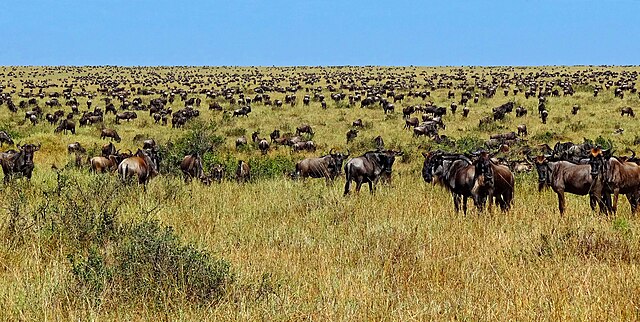Animal navigation is the ability of many animals to find their way accurately without maps or instruments. Birds such as the Arctic tern, insects such as the monarch butterfly and fish such as the salmon regularly migrate thousands of miles to and from their breeding grounds, and many other species navigate effectively over shorter distances.
Manx shearwaters can fly straight home when released, navigating thousands of miles over land or sea.
The sandhopper, Talitrus saltator, uses the Sun and its internal clock to determine direction.
Rayleigh sky model shows how polarization of light can indicate direction to bees.
The homing pigeon can quickly return to its home, using cues such as the Earth's magnetic field to orient itself.
Animal migration is the relatively long-distance movement of individual animals, usually on a seasonal basis. It is the most common form of migration in ecology. It is found in all major animal groups, including birds, mammals, fish, reptiles, amphibians, insects, and crustaceans. The cause of migration may be local climate, local availability of food, the season of the year or for mating.
Mexican free-tailed bats on their long aerial migration
Wildebeest on the Serengeti 'great migration'
Flocks of birds assembling before migration southwards
Many species of salmon migrate up rivers to spawn








